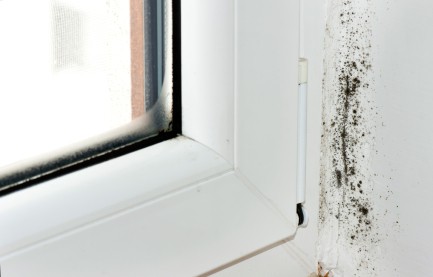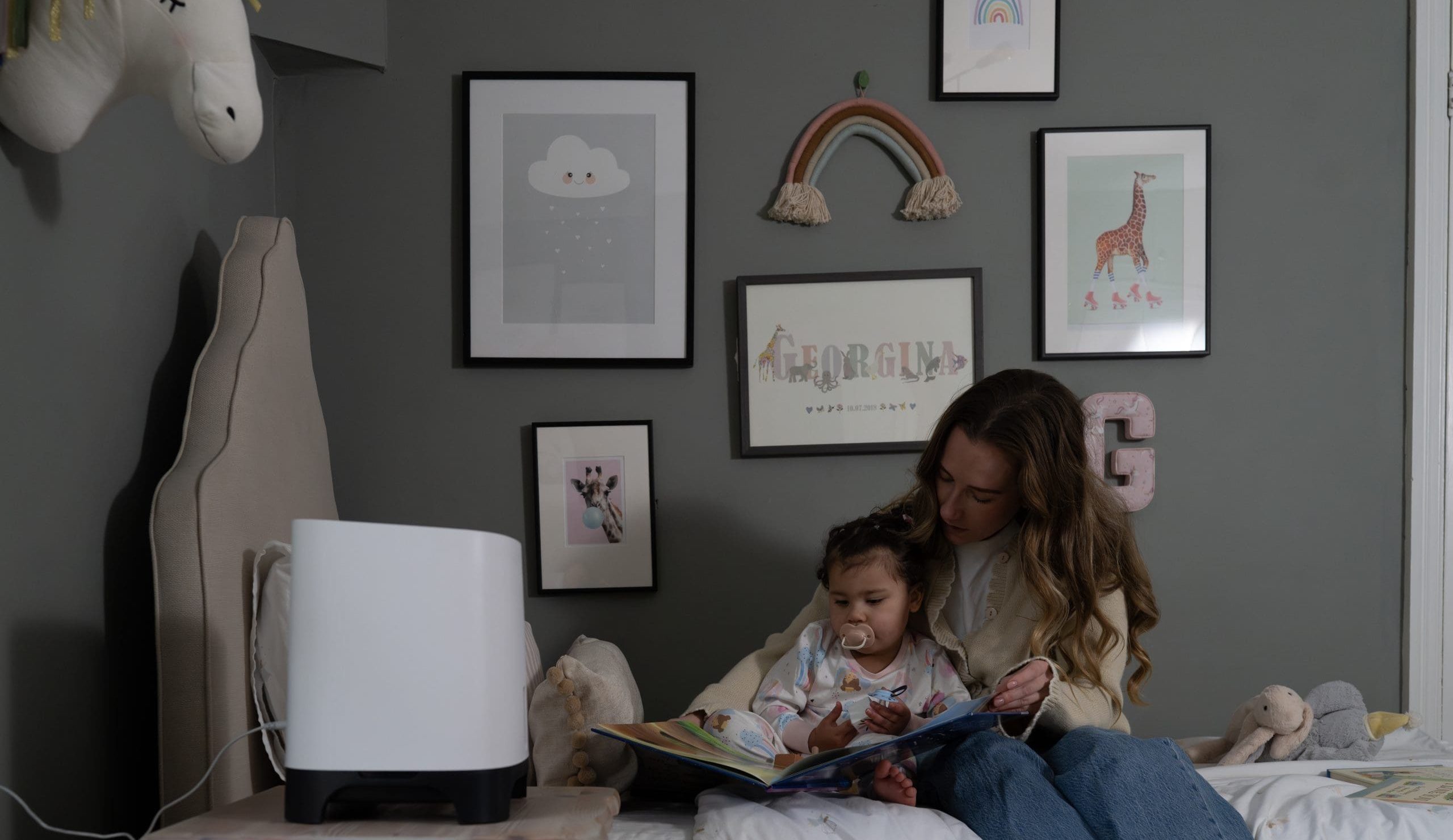By Chris Michael, Managing Director of Meaco, the UK’s leading air purification specialists
The unprecedented cost of living crisis is forcing UK households to cut back on the use of gas and electricity. We are all looking for ways to reduce our energy consumption, three ways of doing this will be to keep the heating turned off for longer, keep it on a low setting when it does come on and avoid using a tumble dryer.
When it comes to drying washing its natural that people will hang wet washing on clothes racks to dry indoors instead of using tumble dryers, which are one of the most energy-intensive devices in the home.
This will be fine at first, but over the coming weeks the wet washing will take longer and longer to dry as we start to close our windows to keep precious heat in and the moisture content in the air increases from the clothes that we have been drying over time.

This build-up of moisture will mean that where a load of washing might have dried in several hours in August/September, that same load will take a couple of days in October. And it may take as much as four or five days by the time we get into winter.
Damp – The Hidden Menace
Drying Your Washing Indoors Introduces A Hidden Menace To Your Home – Damp. You Won’t Be Able To See The Extra Moisture In The Air, But It Will Be There. Because The Moisture From The Clothes Has To Go Somewhere, Over Time You Are Likely To See Problems Such As Mould Growth, Condensation And Musty Smells. This Can Cause Damage To Wallpaper, Carpets, Furniture And Windowsills.
Worryingly, Damp And Mould In The Home Is Likely To Contribute Towards Respiratory Problems, Respiratory Infections, Allergies Or Asthma. Damp And Mould Can Also Affect The Immune System, Especially For The Very Young And The Elderly.
Seeing This For The First Time?
People who usually don’t worry about their tumble drier use may be seeing these issues for the first time, as they switch to drying washing indoors. And then there’s the other unseen issue – cold, wet air is more expensive to heat. So your heating system is now working overtime to heat the air in the room where you dry your washing. This could completely wipe out any savings you are making on not using the tumble drier.
The good news is that there are low cost ways to efficiently dry wet washing indoors and prevent damp and condensation in your home. Here are our five top tips:
1. Reduce moisture vapour
Many everyday tasks create moisture, often without us noticing. By putting lids on saucepans when boiling or steaming vegetables and using an extractor fan briefly or opening a window when using the bath or shower, homeowners can reduce moisture vapour in the air.
2. Make air drying indoors efficient
Drying clothes inside is gentler on fabrics than tossing and tumbling in a dryer and prevents static cling. Before you take them out of the washing machine use a rinse cycle to reduce the amount of water left in the clothes to a minimum. Place a drying rack away from walls to prevent the moisture from being trapped. Hang items individually and with as much space in between them as possible so they will dry more quickly. Open windows to enable airflow.

3. Warm up your house without central heating
Making the most of any natural sunlight can help to warm houses and dry out any damp air. Opening curtains and blinds in the day prevents moisture from being trapped around the windows and using rugs and mats on wooden and stone floors can make rooms feel warmer too.
4. Simple changes inside and outside the home
Encouraging air flow and removing opportunities for damp to spread reduces damage or removes opportunities for mould to form. Opening doors of built-in wardrobes that sit on outside walls and trying to keep furniture, clothes and shoes from touching outside walls can stop damp developing. Keeping gutters clear also decreases the amount of water that may spill down external walls, which could contribute to moisture in the home.

5. Consider investing in an energy efficient dehumidifier that has a laundry mode
In essential all of the above is good solid advice but none of it removes any moisture from the home and this is the mistake that people make. The only way to remove moisture without opening windows and turning the heating right up is to use a dehumidifier. But there are ways that you can manage this extra cost.
Dehumidifiers reduce the level of humidity by sucking in air from the room, removing the moisture, and then blowing the warm, dry air it back out into the room again. This can help to remove the ‘damp chill’ factor in the air, so the central heating could run at a lower temperature or even be switched off.
Dehumidifiers are effective at drying washing indoor and use considerably less electricity than tumble dryers. They can cost as little as 8p per hour* to run. Look for dehumidifiers that use a humidistat, which means the dehumidifier switches itself off when the target humidity is reached, only switching back on when it detects the humidity has increased. A device that switches itself off when its not needed saves lots of electricity.
The dehumidifier will not only help you to dry your laundry it will also prevent condensation from forming on the windows and mould from growing on the walls, your clothes and furniture.
Using a dehumidifier with a HEPA filter will mean that it will be doubling up as an air purifier to make sure that the air is not just dry but healthier as well.
Investing in an energy efficient dehumidifier over other similar products on the market can save homeowners up to nearly £150 cheaper a year to run**.
By taking these tips on board, homeowners can adapt during the cost-of-living crisis to effectively dry washing indoors whilst keeping health and home protected from damp.
*A dehumidifier that can extract up to 12 litres a day, with a wattage of 157w (0.157 kWh) would cost just over 8p an hour based on the October 2022 price of 34p per kWh per hour. A dehumidifier that can extract up to 20 litres a day, with a wattage of 480w would use 0.48 kWh, meaning that an hour’s usage would cost just under 25p.
**Research from Meaco in April 2022 after the spring price rate rise found that the Meaco Arete One 20L was £143 a year cheaper to run than its worst performing competitor, based on six hours use per day over 365 days. The next best machine after Arete was still £39.25 more expensive than the Arete One 20L to run. If a machine is kept for five years, this totals a saving of £196.25 to £715.00.
Products featured: MeacoDry Arete® One 20L Dehumidifier / Air Purifier







8 responses
I have just purchased the Arte two 12L and want to use it for drying laundry in my utility room, the room also has an extractor fan, should I use both in tandem ? Or keep the extractor fan off?
Googling offers both on and off as the solution for using the extractor fan at the same time, hence why I’m asking , many thanks Adam
Hi Adam, thank you for your query. Whilst drying your laundry you can use both the extractor fan and the dehumidifier at the same time. Please be aware that you may see that the dehumidifier collects less water than expected as it is being helped to remove the humidity by the extractor fan. I hope that helps!
Can you please advise me which dehumidifier I need , we have a 3 bedroom with a large dinning and living rooms the hall gets condensation on the outside walls and all windows have condensation, we also would like to dry clothes , thanks. Adrian
Go for a 20 or 25L and use it to dry the washing.
We are currently experiencing a slight issue with damp inside the house and have decided to take the plunge but cannot decide between the Meaco Arete 20L and the Platinum Low energy 20L. I understand that the Arete is quieter with a smaller rank than the Low Energy. Any other considerations are welcome (2 bedroom double storey house)
Kevin,
Thank you for your email, the Arete design gives it a lot of advantages over any other 20L, including our own 20L low Energy.
With Arete;
• The control panel is easier to use, the most often used buttons are larger and the least used buttons are smaller
• There is no defrost light or fan speed button, the machine looks after these things.
• Arete has a night mode.
• Arete can be pushed right up against the wall
• Arete allows you to access the filter without turning it around.
• The tank is easier to remove on Arete.
• The water can be poured to either right or left.
• If you want to use continuous drainage then on Arete this can be done using a garden hose.
• Arete has a better quality HEPA filter.
• Arete is quieter.
Arete is the newest design, this is why it is better in all areas.
Hope this helps.
Chris
Hi there,
I am looking for an energy efficient dehumidifier and I’m a bit confused as what to get. We dry our washing on airers in the garage, where our hot water cylinder is situated. It doesn’t freeze in there but as soon as I open the door, I can smell the damp from the washing. It then requires me to re-wash the clothes and dry what I can on the radiators. The garage is 2m x 4.5m. The cost of running the (desiccant or compressor dehumidifier – whichever is recommended) will play a huge role in the decision making because of the rising energy costs. There are 4 people who live in the house. I would try and run it during the night but that would also depend on the noise output of the unit. Please advise.
Marcel,
Thank you for your message, if you are looking for something to dry the washing in the garage and to stop the garage from going mouldy with the moisture from those clothes then either the Meaco Arete 20L or the 25L would be best. This will give you dehumidifiers that are very cheap to run, don’t mind the colder temperatures in the garage and will not be heard inside the house.
Chris